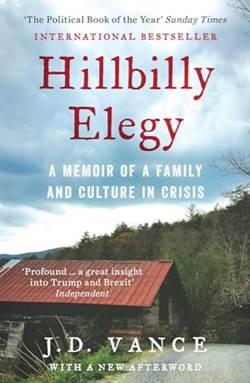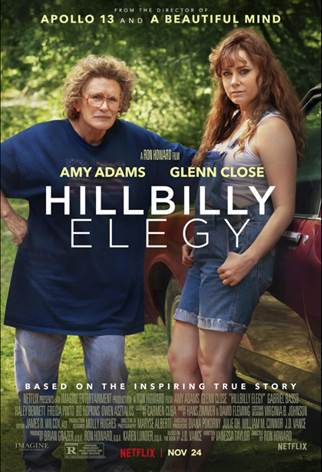You can’t understand Trump or Vance without reading or watching Hillbilly Elegy

Like Trump or Musk, JD Vance offers a third face of America in transition. He made a name for himself with the story of his improbable social ascent, from poor kid from America in decline (the Rust Belt), enlisted in the Marines for several years, then becoming a lawyer with a degree from Yale Law School. This bestseller, which Hillbilly Elegy originallywroteas his dissertation, was published in 2016 when he was 32.
It’s impossible to fully understand contemporary American politics without having read – or seen – Hillbilly Elegy. This book, and then this film, are more than personal accounts: they are fundamental keys to understanding the driving forces behind Trumpism, the rise to power of J.D. Vance, and the cultural and political revenge of peripheral America.
Published in 2016, in the midst of the presidential campaign, Hillbilly Elegy was an unexpected bestseller. In it, J.D. Vance recounts his childhood in a working-class Appalachian family, marked by precariousness, addictions and domestic violence, but also by a culture of honor, loyalty and distrust of institutions. A “hillbilly” culture, a word that could be translated as “redneck”, but whose wounded dignity Vance shows. J.D. Vance’s book can be read as a key to understanding the America that elected Donald Trump. Over some 200 pages, Vance tells the story of a rural America that has felt forgotten for decades. The book also shows, in filigree, the turnaround of a historically Democratic electorate that has become pro-Trump.
The book quickly circulated in Washington circles. It offered a sociological explanation for what the elites didn’t understand: why millions of poor and middle-class white Americans identified with Donald Trump, a New York billionaire with no political experience whatsoever. After publication, J.D. Vance turned his book into a campaign argument and launched himself into politics, with dazzling success: elected senator of Ohio in 2022, then vice-president. The answer can be summed up in one word: resentment. Social resentment, of course, in the face of downgrading due to deindustrialization. But also a cultural resentment: that of a people mocked, marginalized, disconnected from the meritocratic narrative they’ve been fed for decades. In this respect, Hillbilly Elegy isn’t just about one region, Ohio or Kentucky. It’s about a whole America that has lost faith in the system, and no longer believes in the promises of upward social mobility. In 2020, Ron Howard adapted the book for the big screen. The film highlights the central figure of the grandmother, the author’s moral pillar.

Hillbilly Elegy is more than a personal account; it also outlines a political agenda. In the social ruins described by Vance – structural unemployment, generational despair, massive opioid addiction – a violent critique of deindustrialization runs like a watermark. For the author, the dismantling of America’s industrial fabric has left entire communities with no bearings or resources, left to fend for themselves and to the ravages of drugs. The opioid crisis, omnipresent in his story, is not just a health tragedy: it is the symptom of an economic and moral collapse. That’s why, when he became a senator and then vice-president, Vance made reindustrialization a central issue, linking economic sovereignty with social renaissance. Through him, it’s not just an individual trajectory that is being fulfilled, it’s a political program that is being structured. It combines cultural conservatism (family, religion, rejection of intellectual elites), economic nationalism (fight against immigration, relocation, war against China, support for strategic industries), and growing hostility to the standards of governance promoted by international finance.
In his eyes, relocating factories is not just about creating jobs, it’s about recreating links, restoring collective dignity and closing the national “hillbilly” wound. As for the fight against drugs, it becomes a battle that Vance articulates around coercive measures (Mexico, Canada, China) as well as policies to rebuild forgotten territories. In short, a complete rethink of the liberal-globalist consensus of the last thirty years. It would be a mistake not to read or see the film. Not for its literary quality (a veritable bestseller when it was released in 2016) or cinematographic quality (the film has been nominated several times), but to understand this shift in American politics. Behind Trump’s comeback, there is a coherent vision, carried today by figures like Vance, who aspire to structure Trumpism beyond the simple cult of personality, but which is now irrigating American economic and strategic debate.



